Mnemonic: SSSS
Stenotic lesion of Semilunar valve and Septal defect cause Systolic murmur. From this, you should also be able to remember that regurgitant lesions of semilunar valve causes Diastolic murmur. The stenotic lesions of atrio-ventricular valve causes diastolic murmur and regurgitant lesions cause systolic murmur.

Causes of systolic murmur:
- Aortic stenosis (AS)
- Pulmonary stenosis (PS)
- Ventricular septal defect (VSD)
- Atrial septal defect (ASD)
- Mitral regurgitation (MR)
- Tricuspid regurgitation (TR)
- Hypertrophic obstructive cardiomyopathy (HOCM)
- Mitral valve prolapse (MVP)
Causes of diastolic murmur:
- Aortic regurgitation (AR)
- Pulmonary regurgitation (PR)
- Mitral stenosis (MS)
- Tricupsid stenosis (TS)
| Murmur | Crescendo/Decrescendo | Holosystolic |
| Systolic | AS (to neck) MVP (click) HOCM | MR (to axilla) TR (inspiration increases) VSD (harsh) |
| Diastolic | Aortic regurgitation | MS (opening snap) |
Murmurs are the result of blood passing backward through what should be a completely closed valve (regurgitation) or forward through a valve which does not open completely (stenosis).
Radiation is usually only seen in systolic murmurs. Systolic murmurs radiate in the direction of blood flow across the valve.
- MR: from apex to left axilla
- AS: from 2nd ICS to neck
- VSD: from left sternal edge to right sternal edge
There are only 3 lesions which produce a pansystolic (holocystolic) murmur:
- VSD
- MR
- TR
Continuous machinery murmur is seen in:
- PDA
- A-V fistula
Factors affecting murmurs
a. Respiration:
- Inspiration: increases right sided murmur (increased right sided flow)
- Expiration: increases left sided murmur (increased left sided flow)
b. Decreased venous return to heart (Standing, Valsalva) decreases all murmurs except:
- HOCM
- MVP
c. Increased venous return to heart (Squatting, Leg raising) increases all murmurs except: HOCM and MVP
Logic behind this is very simple. In general, increaseing the blood flow through the defective valves increases turbulence and increases the intensity of the murmur. But, in case of HOCM, increase in preload leads to outward ventricular expansion and decreasing the outflow obstruction caused by interventricular septum. Similarly, in MVP the floppy valves tighten with ventricular expansion and fit better. In cases of decreased preload, click of MVP occurs earlier and with increase in preload, click occurs later.
d. Increased total peripheral resistance (hand gripping, phenylephrine) i.e. decreased flow through aortic valve:
- Decreases AS murmur and Increases AR and MR murmur
- Decreases murmur of HOCM and MVP
e. Decreased total peripheral resistance (amyl nitrate) i.e. increased flow through aortic valve:
- Decreases AR and MR murmur and Increases AS murmur
- Increases murmur of HOCM and MVP
The logic behind this is also very simple. With increased TPR and afterload, systolic flow through aortic valve is decreased, leading to decrease in AS murmur. But, due to the same reason, there is increased diastolic flow through the aortic valve from aorta to ventricle in AR leading to increase in murmur intensity. And in case of HOCM and MVP, again, this has to do with the ventricular volume. Increase in afterload, leads to increase in ventricular volume and decrease in the murmurs of HOCM and MVP.
Systolic clicks occur from abnormal ballooning of mitral valve into the left atrium as the mitral valve prolapses. Decrease in venous return bring the click closer to S1 and increase in venous return move the click closer to S2.
Opening snap (OS) occurs in mitral and tricuspid stenosis (MS and TS). The earlier the OS, the worse the disease, because it indicates that the atrial pressure must have been very high to open the valve fast. Later, in diastole the OS, better the prognosis.
A murmur will be high pitched if there is a large pressure gradient across the pathologic lesion and low pitched if the pressure gradient is low. For example, the murmur of aortic stenosis is high pitched because there is usually a large pressure gradient between the left ventricle and the aorta. Conversely, the murmur of mitral stenosis is low pitched because there is a lower pressure gradient between the left atrium and the left ventricle during diastole. Remember high-pitched sounds are heard with the diaphragm of the stethoscope, whereas low-pitched sounds are heard with the bell. Left lateral decubitus position brings the left ventricle close to the chest wall which accentuates or brings out a left-side S3 and S4 an mitral murmurs. The other important position is sitting and forward leaning. The patient should be asked to completely exhale and stop breathing in expiration. The stethoscope diaphragm should be pressed along the left sternal border and at the apex. This position accentuates or brings out aortic murmurs maximally.
Few Eponymous or Named murmurs
Aortic regurgitation (AR):
Austin flint murmur: Usual murmur of AR is early-diastolic but in cases of severe AR, the regurgitated flow from aorta along the ventricular wall impinges against the antero-medial valve cusp and produce mid-diastolic murmur known as Austin flint murmur.
Hint: This is like MS in AR.
Pulmonary regurgitation (PR):
Graham Steell murmur: Early diastolic murmur (usually due to pulmonary hypertension secondary to severe mitral stenosis).
Acute mitral valvulitis in Rheumatic fever:
Carrey Coomb’s murmur: Mid-diastolic murmur similar to MS but without opening snap, pre-systolic accentuation and loud S1.
Complete heart block:
Rytand’s murmur: In complete heart block when atrial contraction coincides with the early rapid filling phase of the ventricle as a short mid diastolic murmur is heard.
Ventricular Septal defect:
Roger’s murmur: Pansystolic murmur of VSD

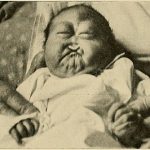
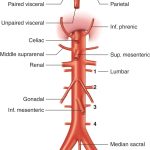
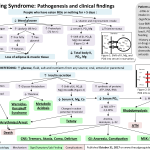
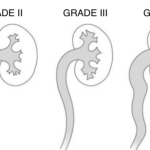
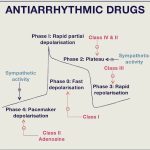
Causes of systolic murmur:
Aortic stenosis (AS)
Pulmonary stenosis (PS)
Ventricular septal defect (ASD) <- should be VSD
Very thorough and very helpful. Thank you!
Ventricular septal defect (ASD)
is under systolic murmurs. Do you mean VSD or ASD (parenthetical does not match typed words)
Thank you. We’ve made the corrections.